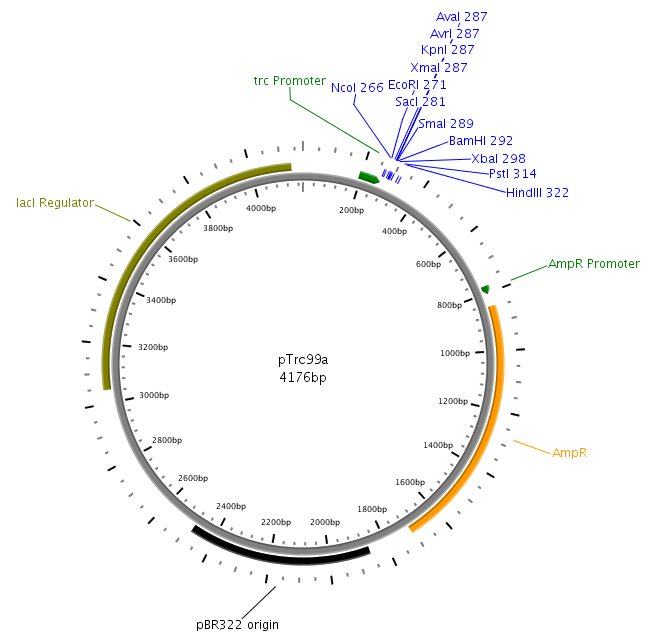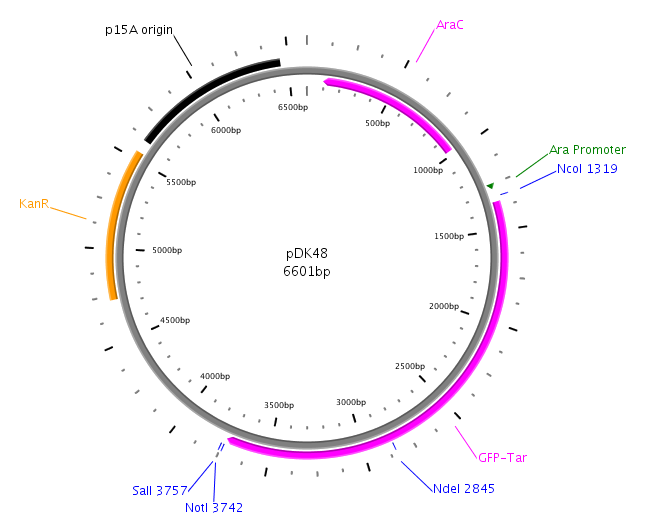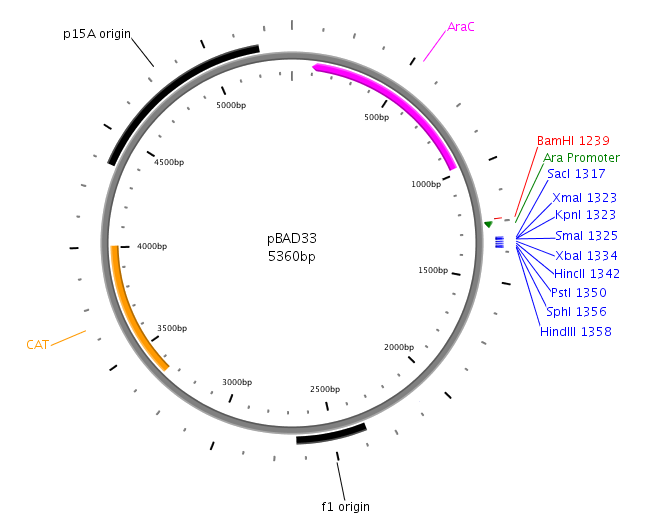Team:Heidelberg/Notebook/Sensing Group/Cloning
From 2008.igem.org
(→Sensing - Cloning strategy) |
(→Sensing - Cloning strategy) |
||
| Line 126: | Line 126: | ||
The core part of the sensing project is the construction of the LuxQ-Tar chimeric receptor, which enables the ''E. coli'' killer bacteria to chemotactically respond to a AI-2 gradient and detect prey cells. The quorum-sensing system is amplified from the ''V. harveyi'' genome while the Tar receptor is from ''E. coli''. On the one hand LuxS needs to be cloned and transformed into one cell type, to make them produce and secrete AI-2. On the other hand the periplasmic ligand binding domain is fused to the cytoplasmic domain of Tar and cloned on one plasmid together with LuxP which is necessary for AI-2 binding. Generally, needed restriction sites for cloning are introduced via the PCR primer. | The core part of the sensing project is the construction of the LuxQ-Tar chimeric receptor, which enables the ''E. coli'' killer bacteria to chemotactically respond to a AI-2 gradient and detect prey cells. The quorum-sensing system is amplified from the ''V. harveyi'' genome while the Tar receptor is from ''E. coli''. On the one hand LuxS needs to be cloned and transformed into one cell type, to make them produce and secrete AI-2. On the other hand the periplasmic ligand binding domain is fused to the cytoplasmic domain of Tar and cloned on one plasmid together with LuxP which is necessary for AI-2 binding. Generally, needed restriction sites for cloning are introduced via the PCR primer. | ||
''In silico'' cloning was performed in SerialCloner [http://serialbasics.free.fr/Serial_Cloner.html SerialCloner], Vector maps were designed with PlasMapper [1]. | ''In silico'' cloning was performed in SerialCloner [http://serialbasics.free.fr/Serial_Cloner.html SerialCloner], Vector maps were designed with PlasMapper [1]. | ||
| + | |||
| + | [[Image:HD PTrc99a.png|left|thumb|250px]][[Image:HD PDK48.png|left|thumb|250px]][[Image:HD PBAD33.png|left|thumb|250px]] | ||
| + | |||
| + | <br style="clear: both;"/> | ||
=== LuxS === | === LuxS === | ||
Revision as of 21:07, 26 October 2008


Contents |
Sensing - Cloning strategy
The core part of the sensing project is the construction of the LuxQ-Tar chimeric receptor, which enables the E. coli killer bacteria to chemotactically respond to a AI-2 gradient and detect prey cells. The quorum-sensing system is amplified from the V. harveyi genome while the Tar receptor is from E. coli. On the one hand LuxS needs to be cloned and transformed into one cell type, to make them produce and secrete AI-2. On the other hand the periplasmic ligand binding domain is fused to the cytoplasmic domain of Tar and cloned on one plasmid together with LuxP which is necessary for AI-2 binding. Generally, needed restriction sites for cloning are introduced via the PCR primer. In silico cloning was performed in SerialCloner [http://serialbasics.free.fr/Serial_Cloner.html SerialCloner], Vector maps were designed with PlasMapper [1].
LuxS
LuxS is amplified from the V. harveyi genome with primers LuxQa/LuxQc. Subsequently the product is cloned into the pTr99alpha plasmid at the NcoI and BamHI sites and transformed into DH5a competent cells.
LuxP
LuxP will be amplied with primers LuxPc/LuxPd from the V. harveyi genome. Then the product will be cloned into native pDK48. After the construction of the LuxQ-Tar Fusion gene in pDK48 plasmid, the LuxP will also be introduced in the pDK48 plasmid at SalI and NotI sites. The whole construct of pDK48 will be transformed into our killer cell.
Fusion receptor
References
[1] Dong, X.; Stothard, P.; Forsythe, I. J. & Wishart, D. S., PlasMapper: a web server for drawing and auto-annotating plasmid maps, Nucleic Acids Res, Vol. 32, pp. W660-W664, 2004
 "
"


